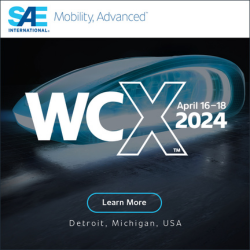Using 3D printing for functional wind tunnel model
The construction of the new Leonardo HD's AW609 wind tunnel model through 3D printing technology and Carbon-composite material
Wind tunnel model manufacturing technique has been changed during the years: historically such components would have been made by a classical composite material technology. The restrictions of this technology were generally the quite long manufacturing time.
Nowadays all models are manufactured using CAD-CAM approach; an internal structural aluminum & steel frame is milled and assembled and all the external geometries are obtained through 3D printing techniques.
Advanced 3D printing combined to the Windform® XT 2.0 material has instead immediately convinced Leonardo HD, thanks to its very short manufacturing time and high-performance features.
The project related to the manufacturing of some external parts (nose and cockpit, rear fuselage, nacelles, external fuel tanks, fairings) of the wind tunnel model (1:8.5 scale) for the prototype of the new LEONARDO HD tiltrotor AW609, made by Selective Laser Sintering technology and Windform® XT 2.0 Carbon-composite material, both supplied by CRP Technology.
This wind tunnel model was designed, manufactured and assembled under the supervision of Leonardo Helicopter Division by Metaltech S.r.l. for a series of dedicated low speed wind tunnel tests.
The low speed wind tunnel tests were intended to cover a standard range of flight attitudes to be performed at Leonardo HD wind tunnel facility and at Politecnico of Milan for the high angles of flight envelope. During the different test sessions various external geometries have been changed and checked in order to understand all the aerodynamic phenomena.
The external main components redesigned and manufactured include: fuselage and nose components, fairings, nacelles and spinner shapes, empennage, wings and flaperons.
To assure the model capacity to withstand the loads expected during the various wind tunnel testing phases, stress and strain calculation have been performed. Such structural strength assessments have been executed for all the critical model components and for the assigned loading conditions.
The envelope of the expected model load conditions, obtained by scaling the full scale reference values, is fundamental to enable the requested structural evaluation and allow for a model components final design capable to guarantee the model full compatibility with both wind tunnel constraints (e.g. supports) and equipment (e.g. internal/external balances).
Model components materials and related stress limitations, stress concentrations, fatigue, etc. have discussed during the design phase.
From the beginning the work was focused on the design of the components, with a correct split of the parts, considering of course the working conditions and the stress that the components would have to sustain.
Identifying the parts to split was an operation undertaken with the CAD, evaluating the functional measures of the working volume but also the possibility to optimize such volume and minimize the production time and costs.
The CAD cut was done with a special technique in order to maximize the contact surface in the place where the structural adhesive would be applied, thus having, also for very big parts but with relatively thin thickness, a great resistance to any kind of stress.
Therefore the unique technical characteristics of Windform® XT 2.0 remained absolutely intact.
The manufacturing time of the single parts was really short: not much more than one day was necessary to manufacture the jobs to set on the 3D printing machines and, after only 4 manufacturing days, all the various parts of the components were already physically created.
Different confidential efficiencies, which are an integral part of CRP Technology's specific know-how, allowed the reduction of the delivery lead time and allowed CRP to minimize the normal tolerances of this technology, and eradicate any potential problem of deformation or out of tolerance.
The final step was the complete model surface finishing, directly mounted on the rig assembly in order to optimize the small imperfections that could have come from the union of the single components. In this case, too, CRP's know-how -that has to be maintained confidential- allowed to execute this step in a very short time: it was therefore enough to flatten the surface of the whole model in an efficient way and treat it with a special liquid that has the double function to make it waterproof and prepare the surface to be painted without any problem.
All the model parts were then mounted and adapted to the main model structure thanks to a dedicated rig and assembled by Metaltech S.r.l.
Featured Product

WCX™ 2024 - Where Mobility Moves Forward
Experience the future of mobility at WCX™ 2024, where innovation meets collaboration. Join leading experts, engineers, and visionaries from around the globe to explore cutting-edge technologies, share insights, and shape the automotive industry's trajectory. From electrification to autonomous solutions, immerse yourself in a dynamic platform that drives progress. Don't miss the opportunity to be at the forefront of automotive excellence.
